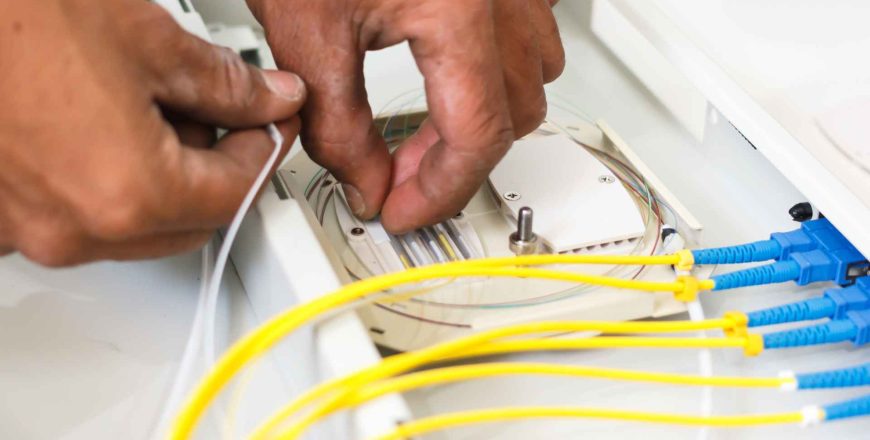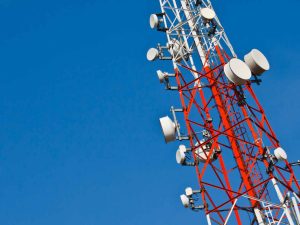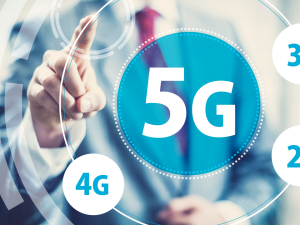Basics of Transmission Technologies in Wired/Wireless Networks

Course Overview
This course is a comprehensive introduction to modern transmission systems. It starts with an overview of different transmission technologies (wired and wireless), and delves into the various applications of transmission technologies, including their pros and cons.
Wireless transmission technologies such as microwave, satellite communications, and mobile communications will be covered in detail. Participants will learn about the principles behind these technologies and their applications in modern communication systems.
Dense Wavelength Division Multiplexing (DWDM) and Ethernet that are classified under fiber optic transmission technologies will also be explained. Participants will learn about the unique properties of fiber optic cables and their advantages and disadvantages. The course also includes a module on data communications, where students will learn about the principles of data transmission and the different communication protocols used in modern networks.
Target Audience
- Vendors, Network operators and Consultants
- Transmission Managers, Engineers, and Technicians
- Planning Engineers
- Operations Engineers
- Finance, Legal and Regulatory professionals who are required to have a high-level idea of various transmission technologies to help them in business decisions
Duration & Training Format
- Classroom: 3 days
- LIVE Virtual: 21 hours
*Note:
- A minimum of 8 or more participants is required for a Classroom session to commence.
- A minimum of 6 or more participants is required for a LIVE Virtual session to commence.
- LIVE Virtual courses can be conducted for 5 hours or 7 hours daily. Please note that the number of training days will be extended if you opt for 5 hours daily.
Upcoming Course Dates
18 – 20 Aug 2025 (Mon – Wed), GMT +8
If you are keen on attending the above scheduled course, please register your interest via our course enquiry form.
Course Objectives
At the end of this course, participants will be able to:
- Identify and describe the different types of transmission media, including copper, fiber optic, and wireless, and discuss their pros and cons
- Understand the technologies that are suitable for wired and wireless media, including modulation techniques and signal processing
- Discuss the transition from legacy to modern technologies
- Explain the principles of microwave and satellite Communications, including their applications and advantages
- Understand the concepts of TDM, WDM and Ethernet technologies, including their architecture and applications
- Discuss strategies for maximizing the return on currently laid media, including upgrading, consolidation, and optimization
- Understand the fundamentals of the TCP/IP protocol suite, including the function of each layer and how they interact in data transmission
Key Benefits
Participants will gain a comprehensive understanding of transmission technologies and applications, including the principles of transmission systems, types of transmission media, modulation techniques, and their applications. They will also gain experience and practice in analyzing and designing transmission systems, enabling them to apply their knowledge in real-world scenarios.
Course Outline
- Media, Technologies, Features
- Copper, Optical Fiber, Wireless
- Twisted Pair, Coax, Single-mode, Multi-mode Fiber, Microwave, HF/VHF, 3G/4G/5G, Satellite Communications
- Ethernet Over Copper: xDSL, Ethernet Over PDH
- Active Ethernet vs Passive Optical Network
- PDH, SDH, Carrier Ethernet
- Migration from Legacy towards Ethernet
- Case Studies: Usage of various Media Types in Modern Operators
- Modulation and Multiplexing Techniques
- Need for Modulation
- Amplitude Modulation
- Frequency Modulation
- Phase Modulation
- Frequency Division Multiplexing
- Time Division Multiplexing
- Code Division Multiplexing
- Forward Error Correction
- Data Communications and TCP/IP Protocol Suite
- Seven Layer Architecture
- OSI vs TCP/IP Models
- Application Layer Protocols
- Transport Layer Protocols
- Network Layer Protocols
- Data Link Layer Protocols
- Physical Layer Protocols
- Software Tools: Packet Analyzers
- Case Studies: Data Network in Major Service Providers
- Overview of Microwave Transmission
- Frequency Spectrum
- Ranges and Speeds
- Point-to-Point and Point-to-Multi-point
- Microwave Planning
- Ethernet Radio and Common Features
- Software Tools for Microwave Planning
- Case Studies: Microwave Networks in Modern Networks
- Satellite Communications
- Common Frequency Bands
- Satellite Applications and Orbits
- Modulation and Coding
- Examples of LEO, MEO and GEO Satellites
- Transponder Basics
- Link Path Engineering
- Software Tools for Satellite Link Path Planning
- Case Studies: Usage of Satellite Communications by Satellite Operators and Telcos
- Mobile Communications
- Evolution of Mobile Generations: 1G/2G/3G/4G/5G
- Architecture of 4G/5G Networks
- Cellular Frequency Spectrum
- Timing and Synchronization
- Cellular Backhaul
- Transmission Technologies for Mobile Backhaul
- Case Studies: How Mobile Telcos are Transitioning to the Next Generation and their Impact on Backhauling Networks
- Optical Communications
- Legacy Technologies: PDH and SDH
- Migration of TDM to Ethernet
- WDM: CWDM and DWDM
- DWDM Network Architecture
- Fiber Characterization
- Ethernet Over DWDM
- Case Studies: DWDM Networks in Major Telcos
- Carrier Ethernet
- IEEE 802.1 and 802.3
- Ethernet Frame and VLANs
- Differentiating Attributes of Carrier Ethernet
- Layer 2 Technologies: Bridging, Provider Bridging, Provider Backbone Bridging
- Layer 2.5 Technologies: MPLS and its related flavors (VPLS, VPWS, MPLS-TP)
- OAM and QoS
- Role of MEF in Carrier Ethernet
- Case Studies: How Telcos are Transitioning from Legacy Technologies to Carrier Ethernet
- GPON and FTTx Architectures
- Basics of FTTx Technologies
- Concepts of Passive Optical Networks
- Architecture of Access Networks
- Passive Components
- Examples of GPON Networks
- Case Studies: GPON Networks in Access Providers
Pre-requisites
NIL



